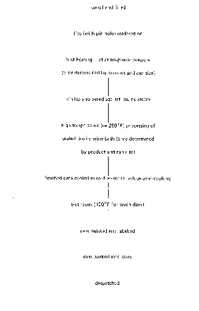


Chapter 2
I Technology Transported; 1788-1840
II Technology Established; 1840-1940
i Meat Preserving: Heat Processing Introduced
ii Horticultural Products: Heat, Sugar and Solar Drying
iii Refrigeration and the Export of Meat
iv Milling and Baking
v Dairy Products
vi Beverages
vii Sugar: Supplying an Ingredient
III The Coming Of Science
IV From Science To Technology: The Post-war Years
V Products And Processes
VI Conclusion
VII Acknowledgements
References
Index
Search
Help
Contact us

Meat Preserving: Heat Processing Introduced (continued)
The Geelong Meat Preserving Company had a short life between 1871 and 1874 but in that time William Anderson of that company changed the geometry of the cans used and effected such a reduction in over-cooking that the London agent of the Melbourne Meat Preserving Company asked for similar packs. When the Geelong company failed Anderson joined Ritchie's company to supervise the implementation there of his improvements. What he did was to change the dimensions of the can from 71/4 in. by 6 in. diameter to 4 in. by 8 in. diameter. This reduced the maximum distance of heat penetration from 3 in. to 2 in., thus greatly reducing the cooking time and improving quality. He also put the pin hole on the side of the can and got a greater submersion of can in the brine than the two-thirds then general. A bonus was the greater compaction of the contents of the flatter cans under atmospheric pressure and, therefore, a resultant meat loaf. All the engineering modifications required by the changed dimensions of the cans were carried out on the spot.New South Wales developments were not as extensive as those in Victoria but in 1869 the Sydney Meat Preserving Company was established by graziers, whose avowed aim was not to pay dividends but to ensure a steady price for their stock.[27] The works were on 400 acres of land at Homebush and in 1872 Alban Gee was appointed manager. Gee had been with Tindal and then sub-manager to Ritchie. He remained with the Sydney company until his death in 1917. Naturally, the technology which he used was the same as that derived from 137 Houndsditch, London. The Sydney company was the most successful commercially of them all. It had a wide range of products and by-products and continued into the 1930s, when it became part of the F. J. Walker group.
In Goulburn, also in New South Wales, in South Australia, and in the country districts of Queensland, meat preserving works were established in the euphoria of the perceived British market. The second of Tindal's men of 1866, Thomas Cordingley, established his own Botany Meat Preserving Company in Sydney in 1875 and was later associated with Tindal once again in the North Queensland Meat Export Company at Townsville.[28]
The major technology used for meat canning in nineteenth century Australia was that derived from Goldner via Ritchie and McCall later John McCall and Company of 137 Houndsditch, London, and is set out in Fig. 2. It lingered into the twentieth century before being superseded by modern can-making and filling and what is now the conventional retorting of canned foods. Other technologies of meat preservation were, however, tried in the late 1860s and early 1870s. One which had a measure of success was that used by the Victoria Meat Preserving Company of which Robert McCracken of Hobart became production manager in 1867. This company canned mutton, but it also developed a method of shipping 'butchers' meat' to England. The whole sheep was boned, so that the meat remained in one piece. It was then washed in salt brine, spiced and tightly rolled. These rolls were packed in casks, tin lined boxes or, later, sheet iron tanks of some two and a half tons capacity. The bottom of each container was first covered with a layer of molten mutton fat, the rolls of meat packed tightly and then covered with molten fat. This product was vigorously promoted in England by Daniel Tallerman, an outgoing salesman whose career is a story in itself.[29] For a time it was sold in butchers' shops with some success but it was neither the familiar butchers' meat nor the canned product which at least could be kept until required.

Organisations in Australian Science at Work - Botany Meat Preserving Company, Sydney; F. J. Walker Group; Geelong Meat Preserving Company; Melbourne Meat Preserving Company, Vic.; North Queensland Meat Export Company, Townsville; Sydney Meat Preserving Company; Victoria Meat Preserving Company
People in Bright Sparcs - Anderson, William; Cordingley, Thomas; Gee, Allan; McCracken, Robert; Ritchie, Samuel Sextus; Tallerman, Daniel; Tindal, C. G.
 |
Australian Academy of Technological Sciences and Engineering |  |
© 1988 Print Edition pages 82 - 84, Online Edition 2000
Published by Australian Science and Technology Heritage Centre, using the Web Academic Resource Publisher
http://www.austehc.unimelb.edu.au/tia/082.html